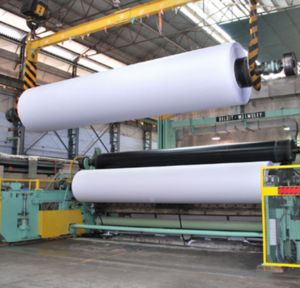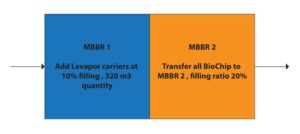THE PROJECT
The largest and very well established Pulp and Papermill in Asia maintains a biological wastewater treatment process comprised of an MBBR as a pre-treatment unit followed by conventional activated sludge for the treatment of the pulping effluent. The plant has a capacity of 30-35 MLD. The existing MBBR has been filled with plastic Biochip MBBR media having 900 m2/m3 surface area. The MBBR is expected to achieve a 50-60% COD reduction with further COD reduction to occur in the activated sludge process downstream of MBBR. Displayed below is the description of the current biological wastewater stream.
THE PROBLEM
Due to inherent production issues, the plant was continuously receiving varying qualitative and quantitative fluctuations of wastewater which was disturbing the process in the MBBR to reduce COD levels. The production facility was also undergoing continuous expansion in order to achieve higher production which in turn required a higher treatment capacity for the biological wastewater treatment plant.
Major Problems Faced:
- Shock loads disturbing the process
- Diminished capabilities to reduce COD levels
- Poor process recovery after the shock load disturbance
THE SOLUTION
Due to the presence of activated carbon, a higher inner porosity and a very high surface area, the Levapor carriers offered much better protection against toxic shock loads.
Based on our previous experience the following solution was offered:
- Transfer all existing plastic Bio Chip to MBBR2 making its filling ratio to 20%
- Add Levapor carriers in MBBR1 at 10% filling ratio with 320 m3 media
Proposed Solution for the upgrading of existing MBBR
THE RESULTS
After one year since implementation, the process has now been greatly stabilized with the improved results achieving the clients COD reduction requirements at the MBBR outlet.


